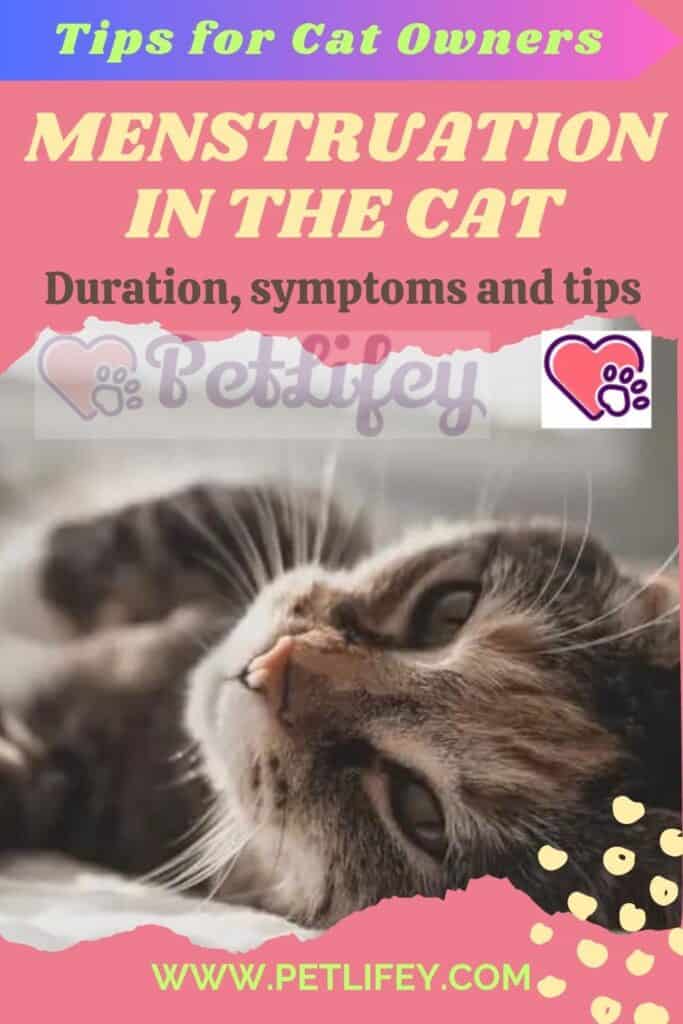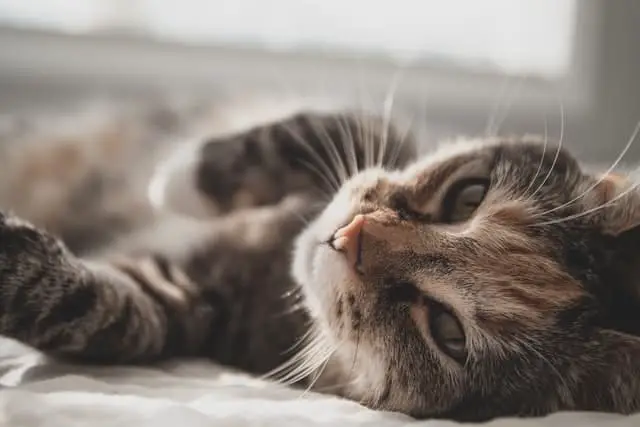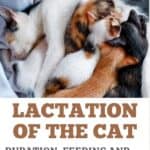
Does your cat have periods? What do we know about feline menstruation? Here is how they work, how long they last and how to help the cat during the heat period.
Cat during the estrous cycle: symptoms
The period of the feline menstrual cycle varies according to the species, but is always closely linked to their period of maximum fertility. It should be noted that, as in dogs, it is improper to speak of the ‘menstrual cycle’, but it is appropriate to speak of the ‘estrous cycle’.
The differences between cat, bitch and woman
What unites bitches in heat and women is the leakage of blood from the vulva, albeit with different causes. If in the woman it is the detachment of the endometrium that detaches from the uterine wall and in the bitch it is not an unfertilized egg that comes out, in the cat there is no blood loss. But it is not the only fundamental difference that distinguishes the feline heat phase from that of the other two aforementioned species.
Puberty
The stage of puberty in cats can reach as little as six months, so it is good to be very careful if we do not want our cat to give us ‘grandchildren’ immediately. Of course, the period of puberty varies from breed to breed.
No ovulation
Unlike the woman who ovulates every month and the bitch who does it every six months on average, the cat never ovulates, or rather ovulates only when she mates with the male of the species. Precisely for this reason we speak of ‘induced ovulation‘, i.e. caused by the male. The egg is only released when fertilized, otherwise it remains in the ovary.
The phases of the estrous cycle
Although we cannot speak of a menstrual cycle, cats go into heat during the period of sexual maturity. They are therefore ready to mate, and they are also quite precocious as they can reach full maturity, that is the estrus, even at only four months of life. In cats that have not undergone sterilization, estrus returns on average every two weeks.
Proestro
The initial phase of the estrus cycle is the one in which the cat has only one goal: to attract the male cat but without allowing him to mate. In short, she provokes him to bring him closer to her but in essence she rejects him.
Estro
After proestrus, the stage of full fertile maturity arrives. It is the most intense phase of the cat’s heat, in which the symptoms become more evident: she emits incessant meows, purrs and rolls on the ground. And if we thought of avoiding the discomfort of cleaning up blood traces on floors and carpets, we will have to deal with the urine instead that will spread a little everywhere.
Metaestro
Following full sexual maturity and a strong desire for mating, the female rejection of the cat returns. She is even aggressive to avoid any kind of contact.
Anestro
The final phase of the cycle represents the period of maximum sexual inactivity, which will end only with the following estrus. Not only the reproductive desire but also the typical symptoms of the cat in heat disappear.
Symptoms of the feline cycle

Although there are no traces of blood as a clue that the cat is in her oestrus cycle, in reality it will not be difficult to tell that the cat is in heat. The hormones will create a real revolution in her body and it will be easy to notice the effects.
Cats and women: the symptoms
If the woman suffers from headaches, back pain, abdominal cramps and fatigue, the cat luckily does not have such persistent pain. But they too change their attitude: between meowing, purring and unusual gestures our cat will never be the same again.
Incessant meowing
She won’t give you any respite: night and day the cat will emit this loud and persistent sound. It will be impossible not to notice: the volume and intensity will be so strong that you cannot ignore them. The aim of these verses is to attract the male who may be prowling around: the incessant meow is actually a call.
Purring and cuddling… excessive!
It is well known that the cat loves being pampered, even as it shows affection it is well known to its owner, but in the heat phase they can never get enough. The rolling on the ground and coaxing with the paws continue even when no one touches them. Furthermore, rolling on the ground has another objective, which is to spread one’s smell and traces of fur in the environment, always to attract the male of the species.
Urine
Urine traces everywhere, almost as if to say: ‘I’ve been here, notice me!‘. In this way the cats spread their scent and attract the male.
What if he loses blood?
Having ascertained that the cats do not release traces of blood during their estrous cycle, when their vulva has blood spots it is good to be especially careful. The causes could be the most varied: intestinal obstructions, wounds, gastro-intestinal ulcers and vaginal infections, among which the most serious is pyometra.
Pyometra
It is a hormone-related condition. It causes a general state of dejection and fatigue, excessive weight loss which can also lead to anorexia, general dehydration due to nausea and vomiting. In addition, infected cats can emit mucus secretions from the vulva.






